Fighting yard weeds is a never-ending battle. Nature is always trying to take over! When it comes to weeding, it’s one of those jobs you really need to do regularly before the yard turns into a mess. However, even with regular yard work, those pesky weeds still appear in massed ranks, ready to spoil the view (and your precious leisure time).
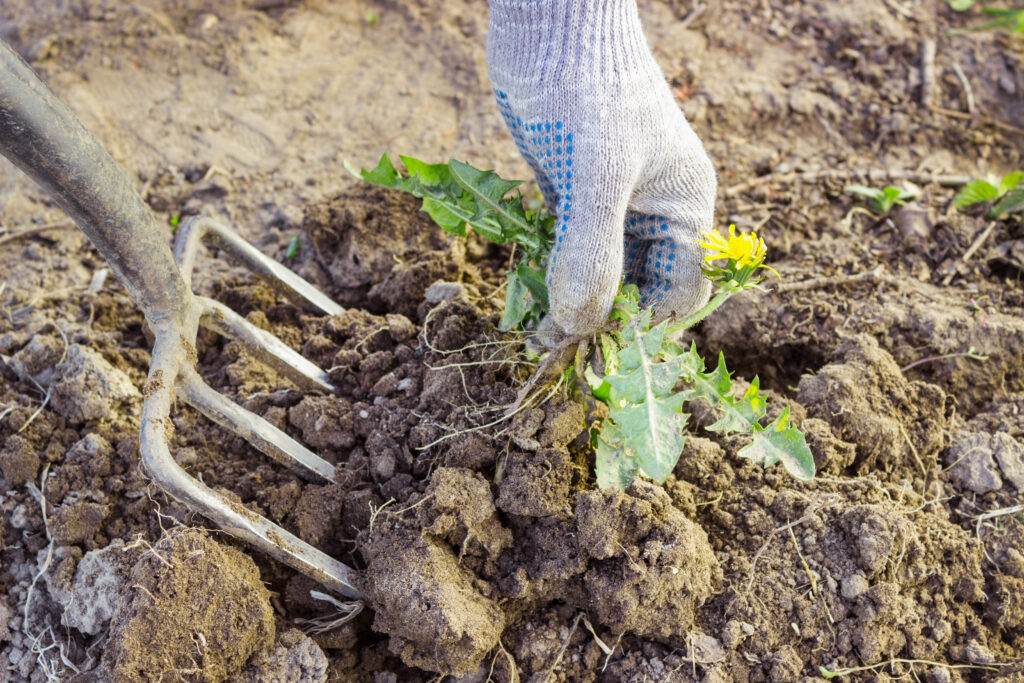
Remove weeds regularly to prevent them from taking over.
©Sever180/Shutterstock.com
Why do weeds spread so quickly? Here are the 11 most likely reasons your yard has so many weeds, despite your best efforts, plus what you can do about it.
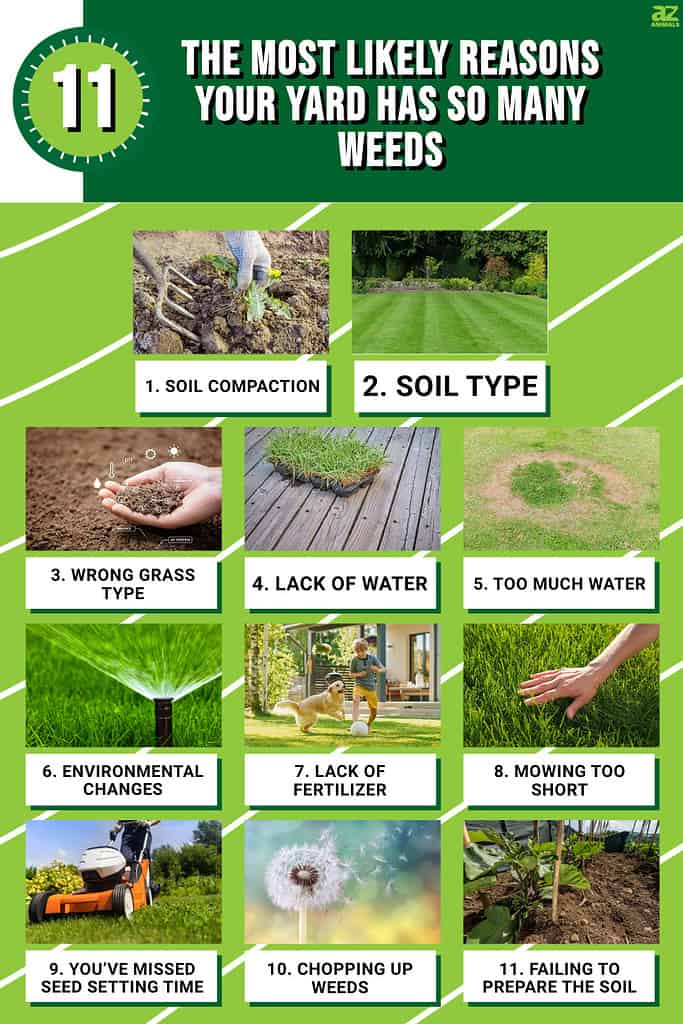
1. Soil Compaction
Compacted soil is hard, squashed soil that receives very little air, water, and nutrients due to its dense structure. Compacted soil is a weed’s idea of heaven. Tough weeds simply outcompete grass because they need so little.
Reduce weed growth by aerating the lawn and digging over borders. This allows rain, air, and fertilizer in to boost grassroots. If it’s healthy, grass can outcompete weeds.
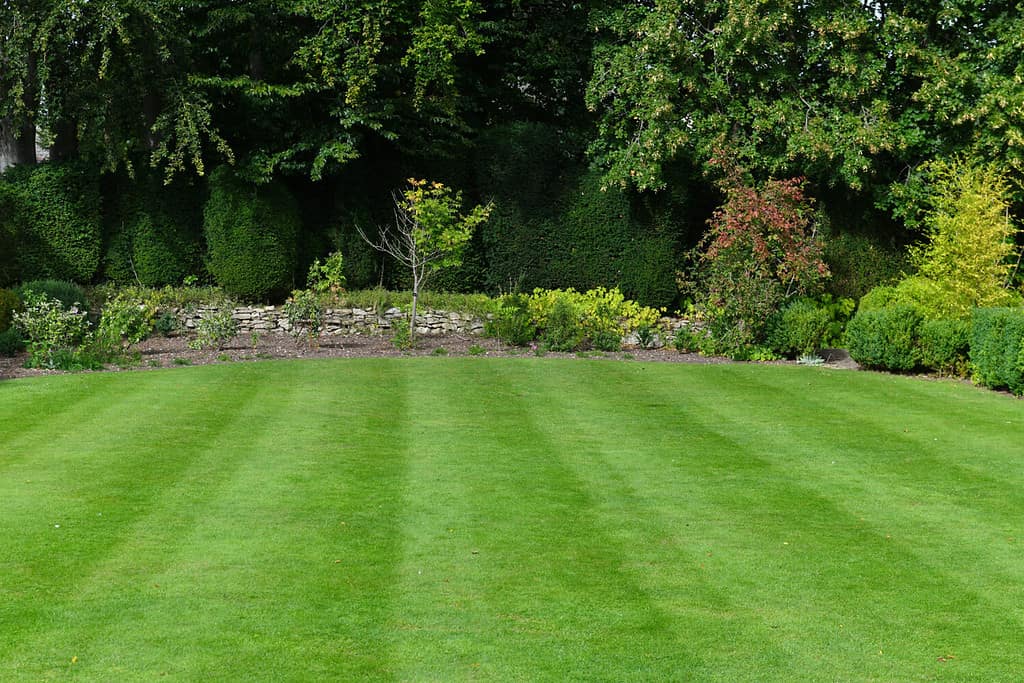
Strong and healthy grass lawns outcompete unwanted weeds.
©1000 Words/Shutterstock.com
2. Soil Type
Not all soil is the same. Acidic, alkaline, chalky, clay-based, sandy, and loamy soil may not suit the type of grass growing there. This leaves the field wide open for weed invasion. Dandelions, for example, will grow in all soils. They’re so tough they practically grow in concrete. Dandelions don’t mind if you have chalky soil, but your choice of grass seed might despise it. This adds up to high-performance weeds.
Changing soil type is all but impossible, so in this case, it’s best to re-seed the yard with a grass type that likes the conditions. There’s little point fighting nature!
And on the subject of dandelions, did you know the name is taken from the French “dent-de-lion,” which means lion’s tooth? It refers to the leaf shape, but may as well refer to a dandelion’s tough nature.

Always choose suitable grass for a yard’s specific soil type.
©Deemerwha studio/Shutterstock.com
3. Wrong Grass Type
Springing off the previous issues with soil type and grass seed is another very similar suggestion as to why you have so many yard weeds. You may have unsuitable grass for the area. While this can be soil type, it could also be shade or sun conditions that don’t suit.
If the grass type doesn’t like the sun, then come summer, sun-loving weeds proliferate through the wilted, unhappy grass. Vice-versa for shaded spots. Again, it’s a case of changing grass type to outperform the weeds.
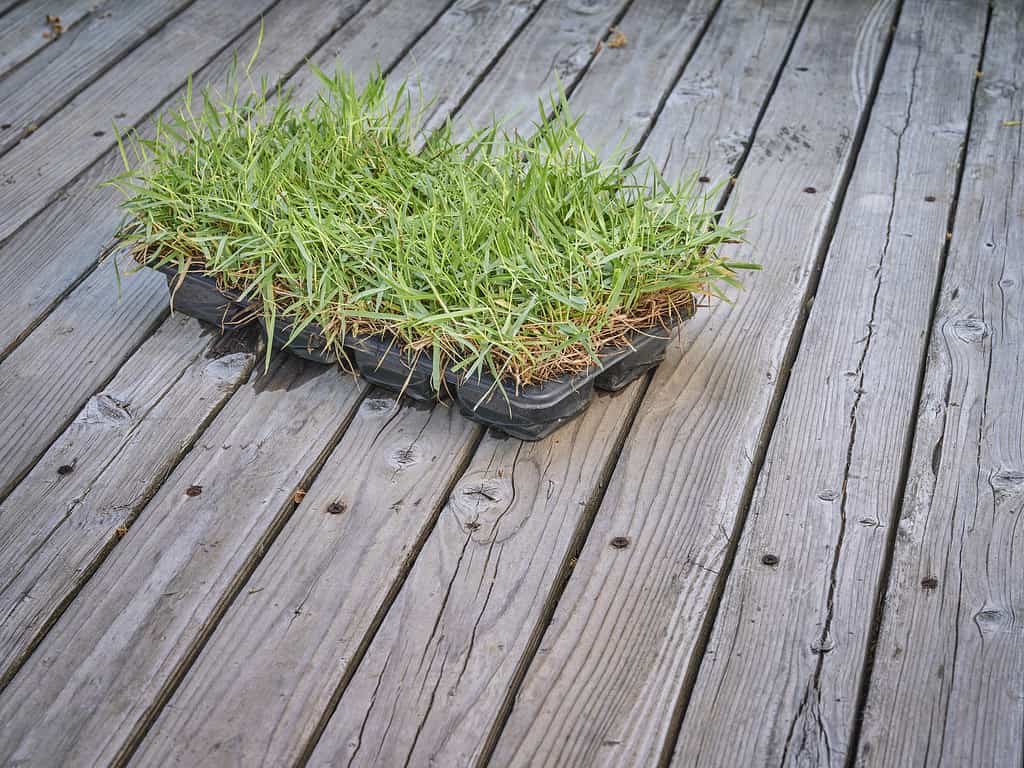
The wrong grass type for the environment leads to excess weeds.
©iStock.com/marekuliasz
4. Lack of Water
Weeds need very little water to grow, but unfortunately, grass needs more.
It’s a vicious circle because when grass performance fails, it’s weakened and unable to take up water. That means the stronger weeds can suck up any available liquid. In turn, this leaves even less for the grass that desperately needs it.
Water lawns and flower borders frequently so they receive the water they need in order to thrive and outperform weeds. Healthy grass and strong shrubs can smother weeds.

Weeds need very little water to survive a hot spell.
©SingjaiStocker/Shutterstock.com
5. Too Much Water
Conversely, giving too much water, or prolific rain, drowns grass and encourages swampy weeds.
Cut back on over-enthusiastic sprinkler systems, or consider drainage options in standing water areas. A pond or marsh will attract wildlife and really benefit the ecosystem. If you can’t fight it, join it!
Ponds encourage wildlife such as insects, amphibians, birds, reptiles, and mammals. Every living creature needs water, and your pond could attract hundreds of different species. It’s better than looking at weeds!

Excess water encourages swampy weeds and drowns out grass.
©iStock.com/MaYcaL
6. Environmental Changes
Once upon a time, was the lawn weed-free, but now it’s overrun? Consider what environmental changes have taken place. Changes might include:
- Removing a tree that’s created extra light and rainfall
- Installing a fence that’s created shade and drier soil
- Change of use, such as a high-footfall kids’ playing area that’s now unused.
Weeds may now have an advantage there, whereas they were suppressed beforehand.

Changes in the way a yard is used can lead to extra weed growth.
©iStock.com/gorodenkoff
7. Lack of Fertilizer
We talked about an unhealthy lawn and how this allows weed invasion, but it’s important and a big reason why your yard has so many weeds. One of the top reasons why lawns fail to perform is the lack of fertilizer.
Grass is a living plant, but we tend to forget about that and treat it like carpet. To grow strongly, it needs air, light, water, and fertilizer. But not just any old fertilizer, one that suits the grass type.
Lawns need suitable fertilizer twice a year for optimum growth. When it’s growing strongly, it outperforms most weeds.
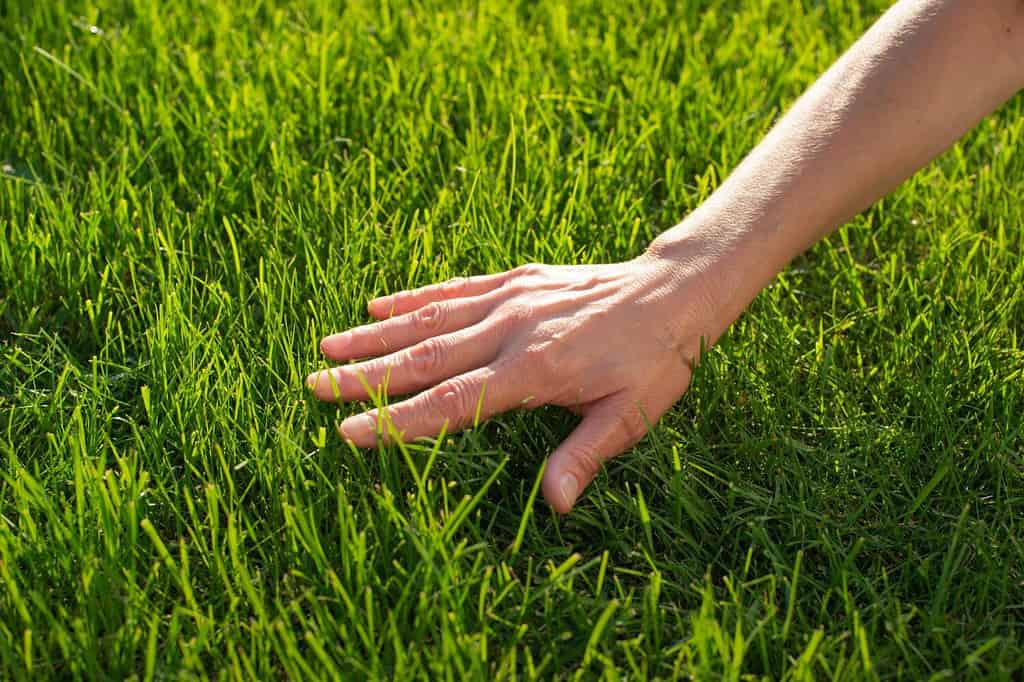
Lawns need regular fertilizer to outcompete weeds.
©Mikhailov Studio/Shutterstock.com
8. Mowing Too Short
For photosynthesis, grass needs light. Mowing too short removes so much leaf blade there’s not enough left to absorb light and create nutrients.
Short grass is also more drought-prone because there’s no shade to prevent water evaporation. Try cutting back on mowing. It might seem counterintuitive because frequent mowing cuts down weeds too, but it gives your lawn a chance to fight back.
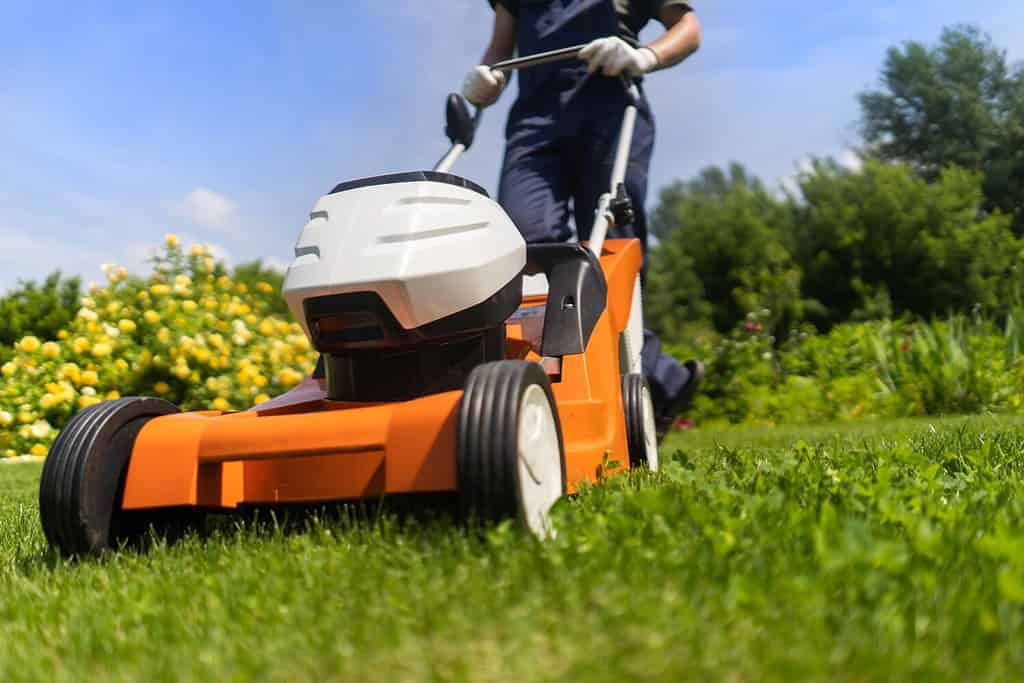
Leave grass a touch longer to combat weeds.
©africa_pink/Shutterstock.com
9. You’ve Missed Seed Setting Time
Weeds either spread via their roots and creep across the yard, or they bloom pretty little flowers and set seed. Each weed can produce hundreds, if not thousands, of new weeds, so dealing with them before they seed is important. The old saying “never let ‘em seed” is anti-weed ammunition. Weed out what you don’t want when the plants are young and certainly before they flower.
It’s hard work chasing the weeds, but ultimately, it’ll make life much easier the following year.

Remove dandelion flowerheads before they have a chance to set seed.
©iStock.com/BrianAJackson
10. Chopping Up Weeds
A common mistake is chopping up weeds. Although icuttingthat weed into numerous pieces, is satisfying be aware weeds can sprout roots from each section, creating many more new hydra-like weeds. We call this process “taking cuttings” when it’s a plant we actually like!
Choose a dry period to hoe vegetable beds because the chopped-up weeds need moisture to re-root. In the lawn, digging out a weed is much more efficient than cutting them.
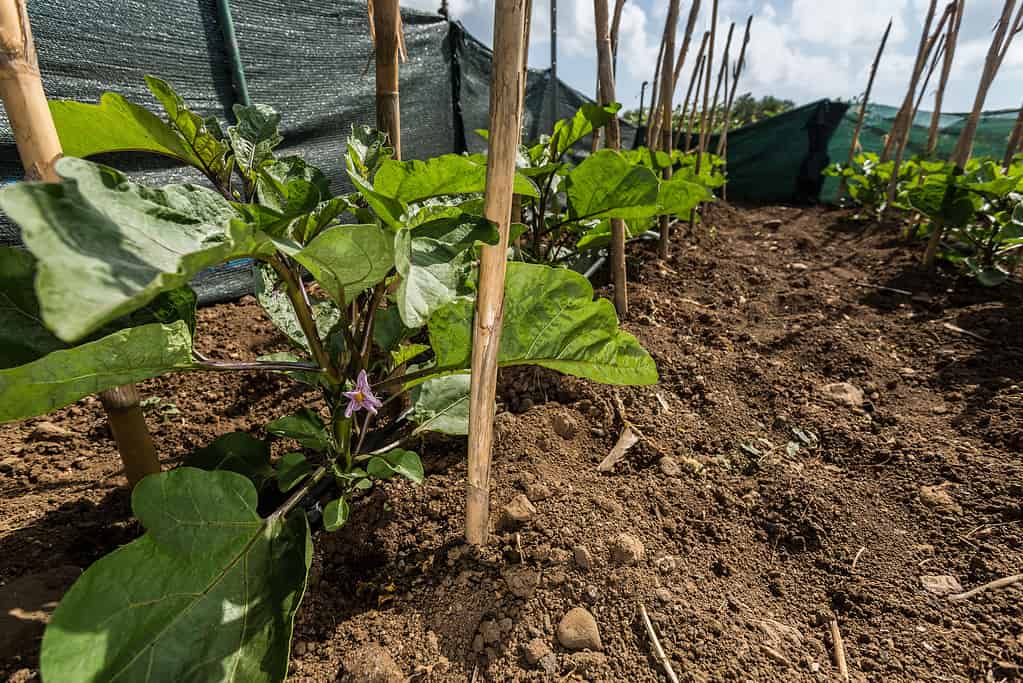
Always hoe on a dry day so weeds can’t re-root in moist soil.
©Mathia Coco/Shutterstock.com
11. Failing to Prepare the Soil
Whether you’re scattering grass seed or planting up a new flower bed, removing all weeds and weed parts is essential. If you have time, dig, remove foliage and roots, then lay cardboard, old carpet, or landscaping fabric for a month before planting. Lack of light will prevent weeds from sprouting.
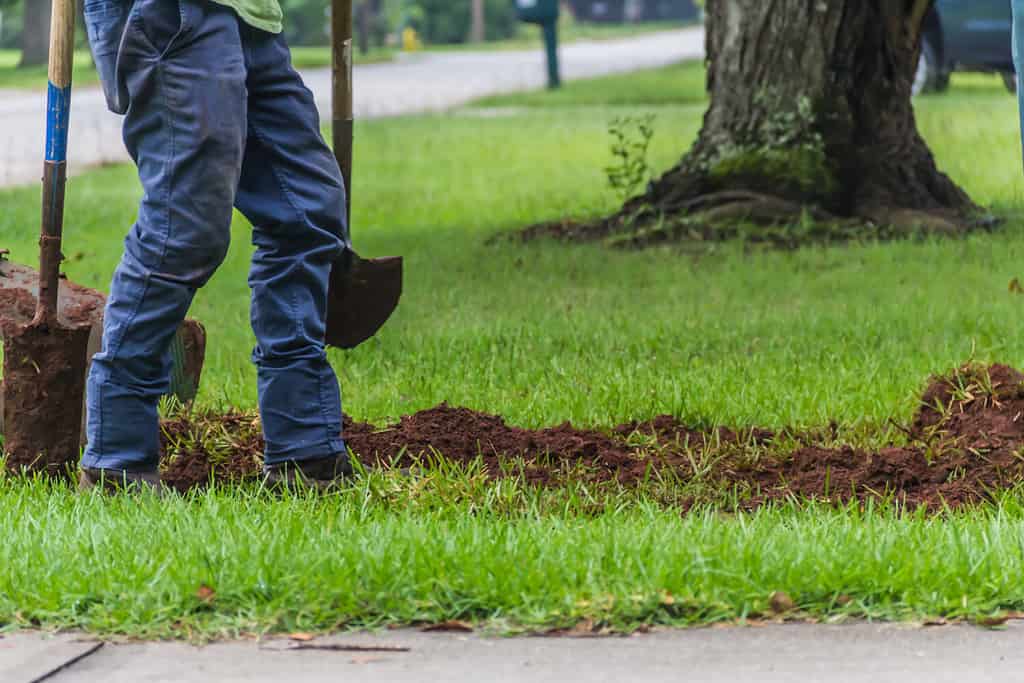
Remove all weeds plus roots before laying grass seeds.
©Will478/Shutterstock.com
Recap: The 11 Most Likely Reasons Your Yard Has So Many Weeds
So, that’s 11 reasons why your yard is so full of weeds. You have two choices, fight back or let them spread.
Many folks choose to let weeds grow because many are valuable sources of nutrients for insects, such as essential bee pollinators, butterflies at all stages of their lifecycle, and birds when their seeds emerge. Milkweed, for example, is the only plant monarch butterfly caterpillars eat.
Another benefit to letting weeds get their way is you can eat them too! Some edible weeds include:
- Purslane
- Lambsquarters
- Pigweed (when it’s young)
- Chickweed
- Dandelion
- Shepherd’s purse seedpods
- Creeping Charlie – once used to make beer!
- Nutsedge tubers
- Buckhorn plantain
- Mustard garlic

Young purslane is a tasty edible weed.
©wasanajai/Shutterstock.com
Inedible weeds include:

Hogweed is not an edible weed, and it can make you seriously ill.
©svetlana-81/Shutterstock.com
Why Am I Getting So Many Weeds?
An over-influx of weeds in the yard can be down to a number of reasons.
The main reason is allowing weeds to spread by ignoring their seeds and creeping roots. Cut down weeds each year before they set seed, and dig up perennials like dandelions and crabgrass to ensure they can’t spread next year.
Poor lawn care is another top reason. A healthy lawn plays its part in the battle against weed invasion. Aerate, rake, re-seed, water, and fertilize your grass so it’s strong enough to fend off the weed army.
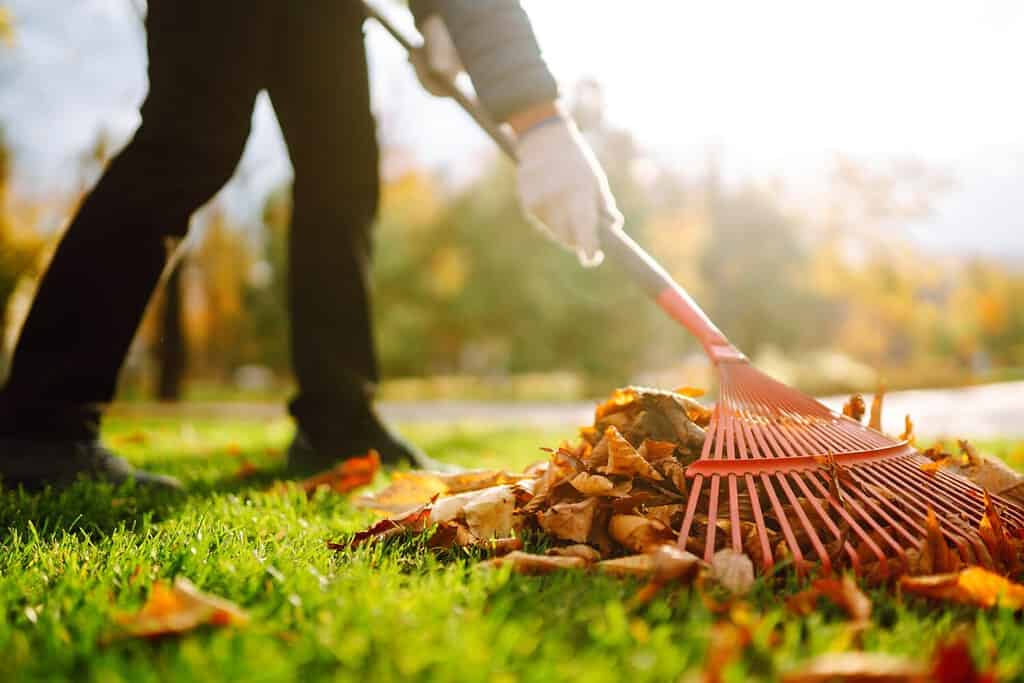
A healthy lawn will fight off weeds’ growth and cut down their spread.
©maxbelchenko/Shutterstock.com
Summary of The 11 Most Likely Reasons Your Yard Has So Many Weeds
| Reason | Solution | |
|---|---|---|
| 1. | Soil Compaction | Aerating the lawn and digging over borders |
| 2. | Soil Type | Re-seed your lawn with a grass that better suits your soil’s condition |
| 3. | Wrong Grass Type | Re-seed your lawn with a grass that better suits your soil’s condition |
| 4. | Lack of Water | Water your lawn frequently |
| 5. | Too Much Water | Don’t overdo it |
| 6. | Environmental Changes | Tree removal, the addition of a fence or children’s frequent play can change a lawn’s environment |
| 7. | Lack of Fertilizer | Feed your lawn to keep it healthy |
| 8. | Mowing Too Short | Leave leaf blades long enough to absorb nutrients from the sun |
| 9. | You’ve Missed Seed Setting Time | Weed your yard before they get a chance to flower and seed |
| 10. | Chopping Up Weeds | Avoid this practice – moist cuttings can take root |
| 11. | Failing to Prepare the Soil | Remove all weeds prior to starting a new flower bed or planting grass |
The photo featured at the top of this post is © Aleksandar Cholanchevski/Shutterstock.com
Thank you for reading! Have some feedback for us? Contact the AZ Animals editorial team.







